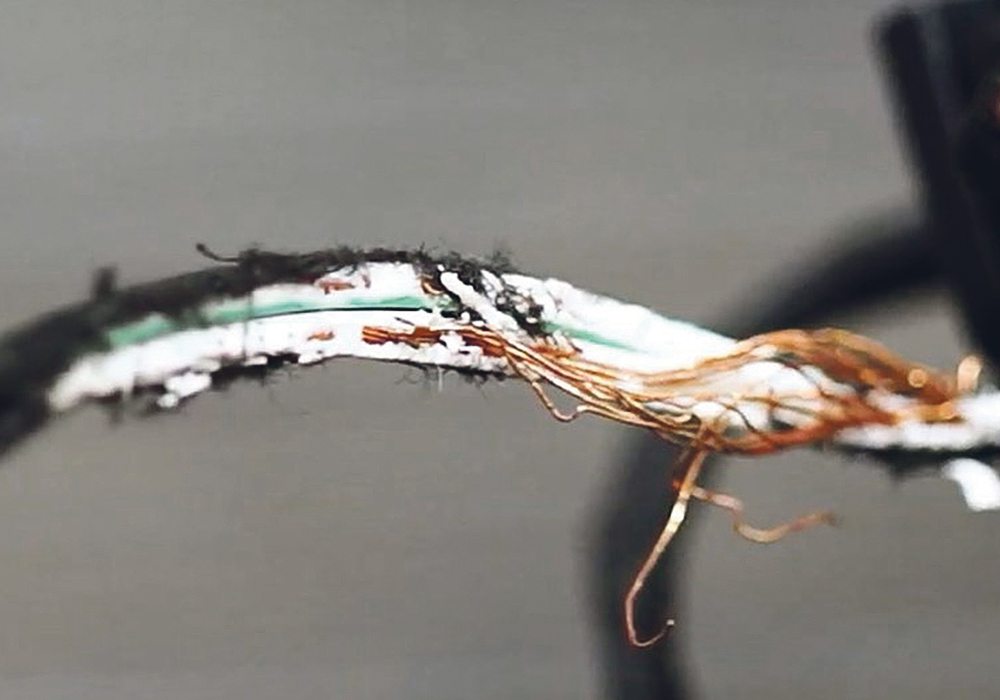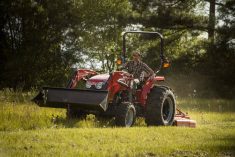BRANDON — It used to be simple repairing damage to a piece of equipment after mice had eaten into the wiring harness. Those days are gone.
Any truck or piece of farm equipment built within the past five years is now digital, and the function of the machine is controlled by delicate sensors and computers. Reeling off 30 inches of new wire of the appropriate colour and splicing it into the harness just doesn’t work anymore.
That farm call by the dealer won’t be cheap.
Read Also

Growing garlic by the thousands in Manitoba
Grower holds a planting party day every fall as a crowd gathers to help put 28,000 plants, and sometimes more, into theground
One hungry mouse can do thousands of dollars in damage and cripple the machine.
Mothballs and traps work to a certain degree.
Mothballs keep mice out of the areas where the odorous white balls are located, but it’s not always possible to protect every nook, cranny, sensor and wire.
Traps work until they’re sprung. If you have 10 traps and a family of 12 mice, you haven’t protected your investment. If those two survivors are boy and girl, they’ll boost their family back to a dozen in no time.
Most people would prefer to kill the mice, but you get the same effect if you can simply keep them out of equipment in the first place.
Mice get onto and into machines by climbing the tires — rubber is a perfect ladder for them. So perhaps the key to a successful mouse strategy is to keep the mice on the ground and off your tires.
Mice don’t like peppermint oil, and if you could coat all the tires on all your machines with peppermint oil, you might never have a rodent in your equipment again — maybe.
Well, in fact, you can do just that, according to John Wilke, who was at Manitoba Ag Days promoting a new rodent retardant based on peppermint oil. The product is called Store It Safe, and it is designed to keep rodents off tires.
“It used to be called Mouse Free, but they had to change the name because it doesn’t actually kill the mice. It just keeps them off your tires,” said Wilke, emphasizing that it’s not toxic to rodents, so it’s safe for pets.
He said prairie farmers have begun applying Store It Safe to combines, sprayers, tractors, semis, personal cars and all other rolling stock on the farm. The product is made in Ontario and was re-introduced under the new name two years ago.
“If you’re putting a vehicle into long-term storage, one application lasts three years. If you drive the vehicle regularly, you need to apply it more often,” he said.
“On my tandem, the mice used to get in under the windshield by the defroster, and they plugged the defroster. So I’ve stopped that, but I still get one in my headliner every now and then, so obviously I haven’t done a 100 percent job of spraying yet. There’s one more spot I have to find and spray.
“Just one untreated opening is all they need. Mice will go through a hole as small as a pencil, and they leave a urine trail for all their buddies to follow. The strong peppermint smell disrupts that trail. Farmers also spray it around bins and seed bags.”
Mice can jump as high as 60 centimetres, which is why the manufacturer recommends coating the entire undercarriage. Many customers also spray a strip on the ground around vehicles that will be parked for any length of time.
List price is $175 for a one-gallon jug. The application sprayer is $40. The product is the consistency of Vaseline in part due to its mineral oil carrier, so it requires a compressor capable of continuous 120 pounds per sq. inch.
Wilke shakes his head: “I don’t know what the Good Lord had in mind when he invented mice, but Noah should have killed that pair before they snuck on his boat.”


















